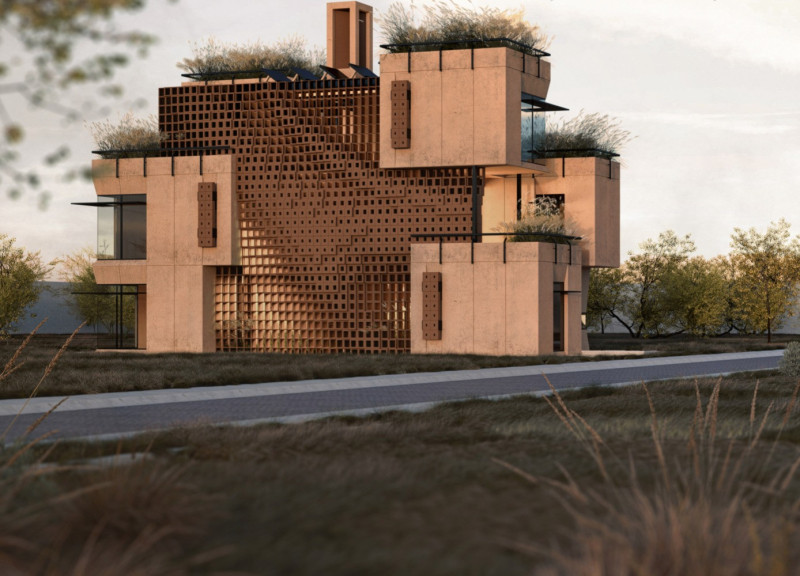5 key facts about this project
At its core, the project aims to facilitate [insert specific function, such as residential living, community gathering, or educational endeavors], ensuring that it meets the practical requirements of its occupants. The design promotes a sense of belonging and connection, enhancing the user experience through well-considered spaces. The thoughtful layout incorporates both private areas for individual use and communal spaces that encourage interaction and collaboration. This balance is essential in fostering a vibrant community atmosphere.
The design features an intriguing interplay of materials, chosen not only for their aesthetic appeal but also for their performance characteristics. The use of [insert materials, like wood, glass, concrete, etc.] contributes to the overall integrity of the building while supporting sustainability goals. By utilizing materials that align with the environmental ethos, the project demonstrates a commitment to responsible design practices, ensuring longevity and reduced maintenance over time. Each material is selected with a purpose, whether it be for thermal efficiency, structural strength, or visual warmth, allowing the architecture to resonate on multiple levels.
Unique design approaches are evident throughout the project, particularly in the innovative spatial organization. The layout is intuitive, guiding users through the space while maximizing natural light and ventilation. Large windows and open floor plans create an inviting atmosphere, facilitating the seamless transition between indoor and outdoor environments. This connection to nature is further enhanced by carefully planned landscaping that complements the architecture, providing both aesthetic pleasure and functional outdoor areas for leisure and social activities.
The design’s sensitivity to its geographical context is evident in its alignment with local architectural vernacular and climate considerations. Integrating traditional design elements with modern aesthetics, the project successfully bridges the gap between past and present, creating a dialogue within its environment. This thoughtful approach strengthens the identity of the project, making it a meaningful addition to the community.
Attention to detail is paramount in this architectural endeavor, with features such as [insert specific details, like custom fixtures, ergonomic design elements, etc.] reinforcing the overall design intent. These elements not only enhance functionality but also reflect the project’s character, offering a glimpse into the values and priorities of the designers. The careful curation of both interior and exterior details ensures that the architecture speaks to its users, promoting a sense of ownership and pride.
Moreover, the incorporation of sustainable technologies, such as passive solar design and advanced energy systems, further elevates the project’s standing within contemporary architecture. These features not only address functionality but also represent a forward-thinking approach that prioritizes ecological responsibility. By embracing these architectural ideas, the project stands as a model for future developments, encouraging others to follow suit in their design practices.
In exploring the nuances of this architectural project, readers are encouraged to delve deeper into its presentation to appreciate fully its architectural plans, sections, and designs. These elements provide invaluable insights into the thoughtful considerations that shaped this project, revealing the layers of thought and creativity invested in its realization. An exploration of these details will enhance understanding and appreciation for the project’s contribution to the architectural landscape, inspiring others to engage with similar principles in their own pursuits.


 Ahmed Hassan Hassan Hassan Hefila,
Ahmed Hassan Hassan Hassan Hefila,  Ehab Hassan Hassan Hassan Hefila
Ehab Hassan Hassan Hassan Hefila 























